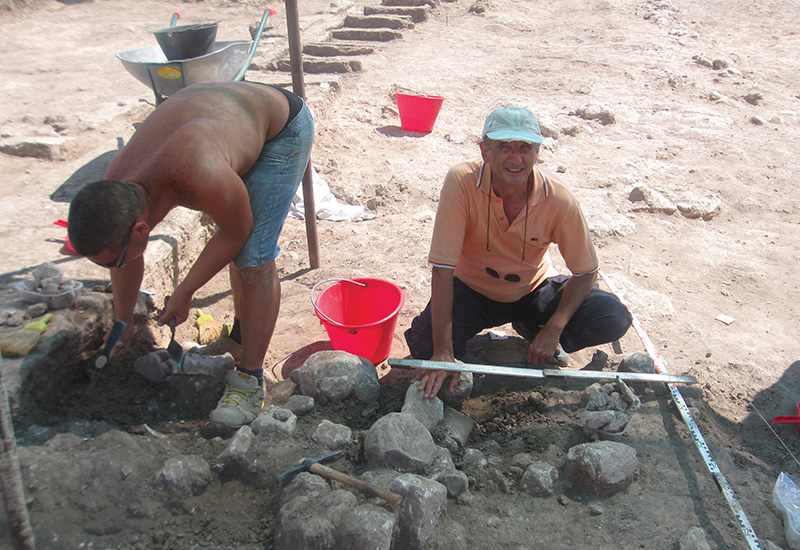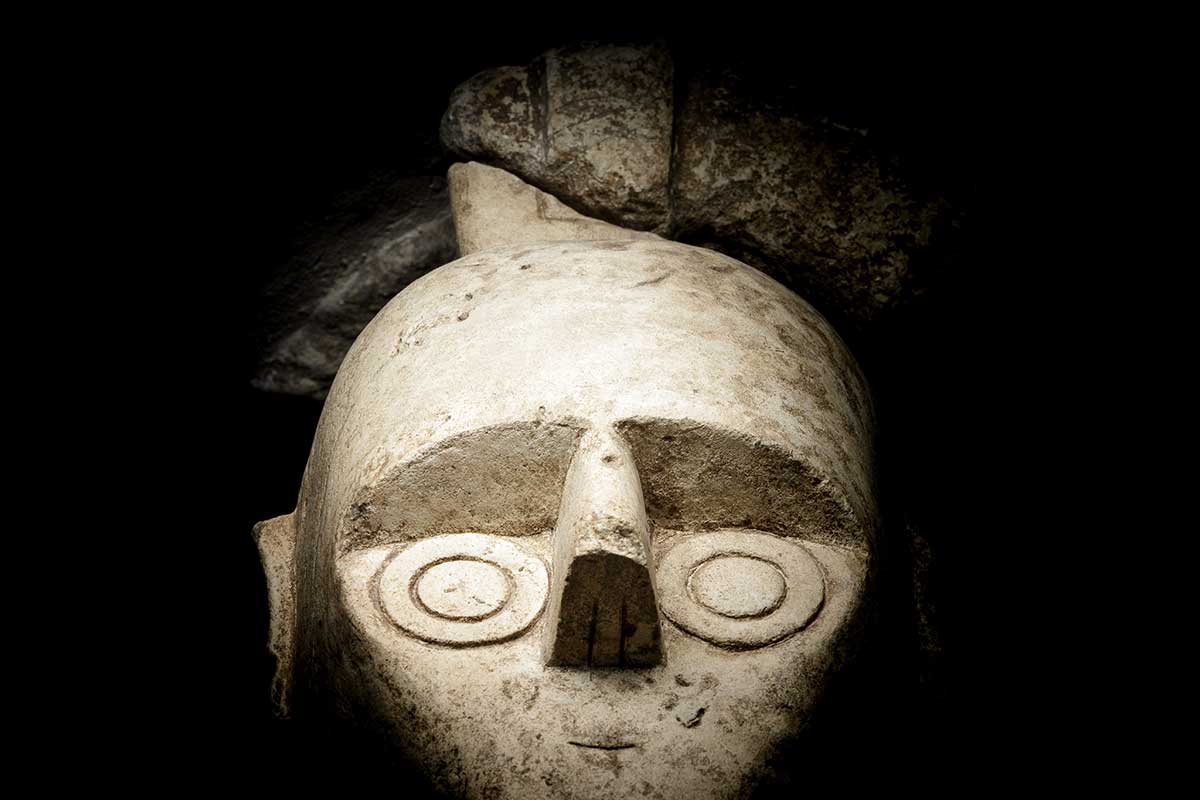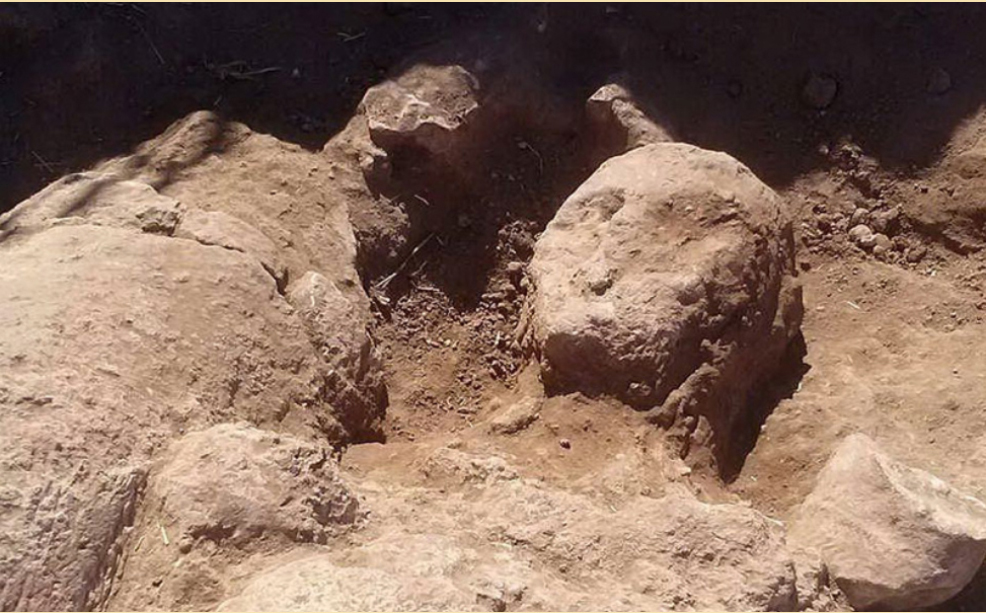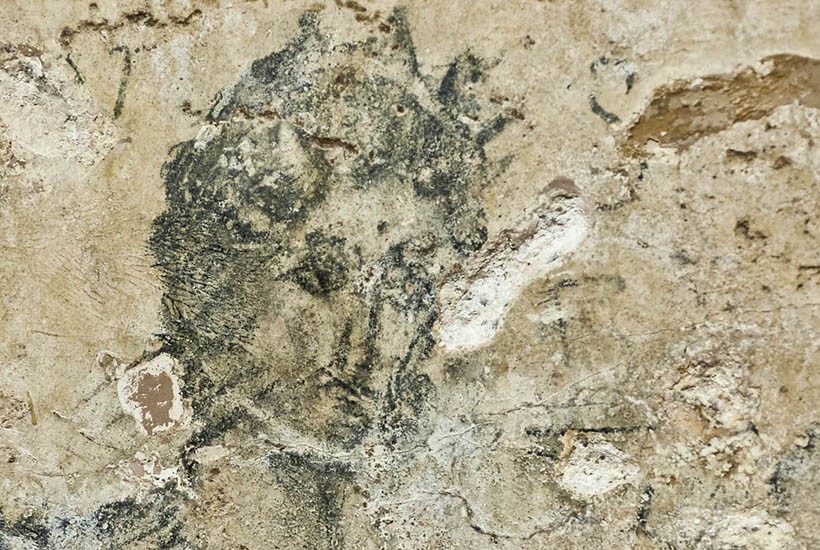Discovery and excavations
Mysterious places emerge from the past to tell us their stories.
Stories of warriors, archers, boxers.
Stories of nuraghi and sacred stones.
The farmers’ ploughs uncovered by chance the treasures buried under the land.
These farmers have revealed to us a glorious past that we are still trying to understand.
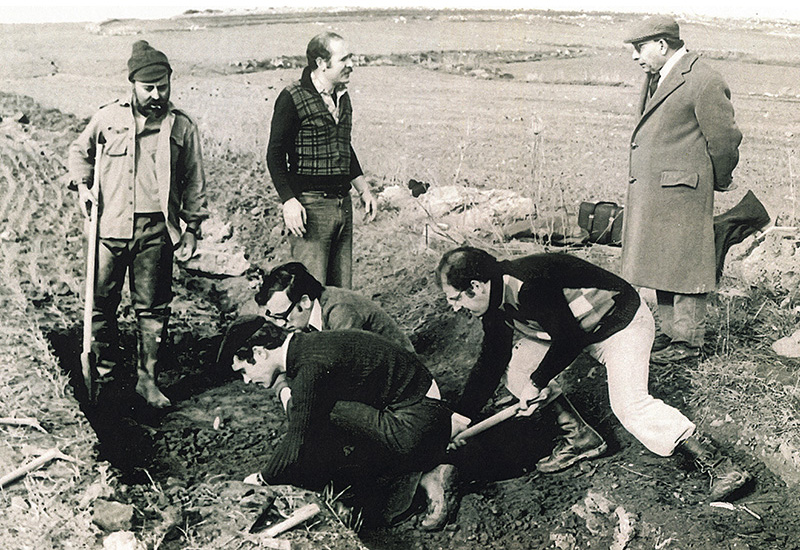
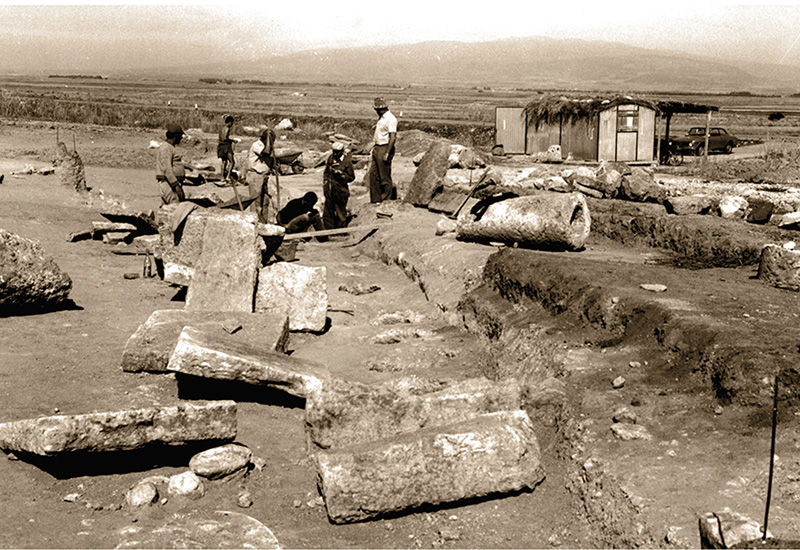
Discovered by chance in March 1974, the archaeological site of Mont’e Prama underwent several excavation campaigns between 1975 and 1979, 2014, 2015–2016 and, more recently, between 2018 and June 2022, the date of the last intervention.
The excavation campaigns carried out since the 1970s in the archaeological site of Mont’e Prama have brought to light an immense and indefinite material: in the excavations new fragments are continually found which must be documented and restored before they can eventually be attributed to distinct sculptures.
The sculptures of Mont’e Prama were worked in limestone, a relatively soft, light-coloured stone, presumably quarried in the area of Santa Caterina di Pittinuri, distant from the site some 16 km as the crow flies. Most of the betyls and the base of a large model of a nuraghe are in sandstone, from the western coast of the Sinis, some 5 km away.
Each of the sculptures was worked from a single block of stone and sculpted all round, to be seen from all sides, also from the back, as shown by carved details on the rear.
The restored material and the latest findings awaiting restoration are on public display at the Giovanni Marongiu civic museum in Cabras and the National archaeological museum of Cagliari.
Currently, fieldwork focuses on extending the excavation area to clarify the original layout of the site and the sequence of events over the long period from original set up of the necropolis to the formation of the sculpture complex, right up to its destruction.
The first excavation campaign
In the 1970s two farmers discovered the first sculptures while ploughing.
The first documented findings date from the spring of 1974. The Cagliari Architecture Superintendency organise a first brief excavation campaign in December 1975, directed by Alessandro Bedini. In 1979, the first systematic excavation campaign was directed again by Carlo Tronchetti.
These early archaeological investigations reveal to us a necropolis in use for several centuries, showing the signs of several different development periods.
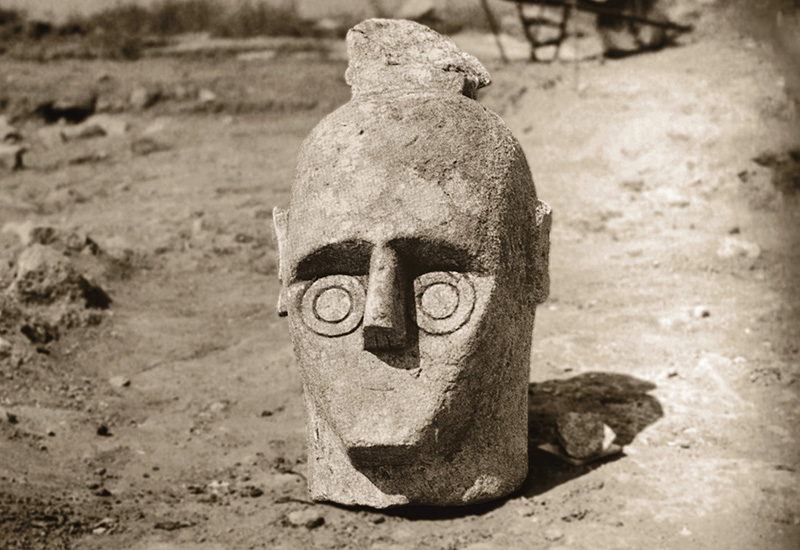
The 2014 excavation campaign
On 5 May 2014, archaeological investigations at Mont’e Prama resumed after more than 30 years.
Geophysical investigations with georadar were carried out over without however finding any elements confirming the anomalies recorded by the instruments.
Therefore, the focus of the excavations once again turned to the necropolis, to the south of the portions already investigated by Bedini and Tronchetti in the 1970s.
The most surprising finding of the 2014 excavations was the recovery of two statues of boxers, adding a new iconography to the Mont’e Prama sculptures. Their iconography is similar to that of the famous nuragic bronze of Cavalupo di Vulci of the 9th century BC.
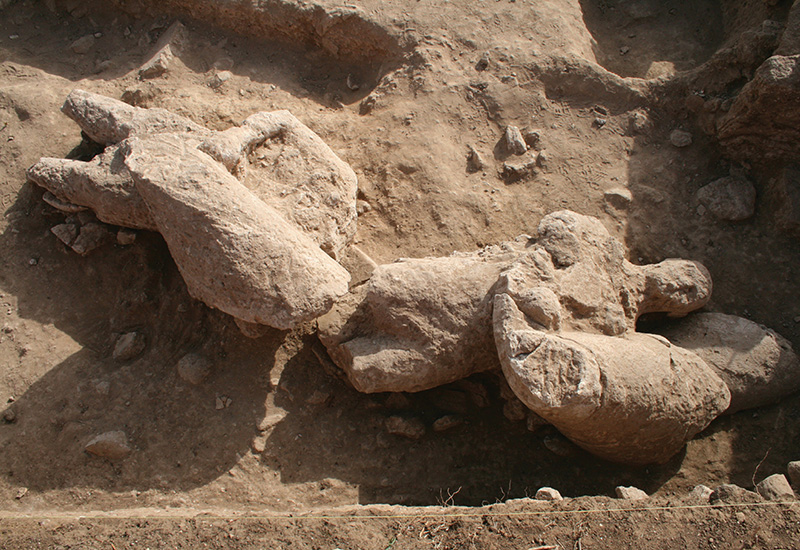
The 2015-2016 excavation campaign
In May 2015, the Superintendence launched a new excavation campaign led by Alessandro Usai.
The campaign, which ended in December 2016, allowed the recovery and restoration of the entire long trench opened between 1975 and 1979, which had been backfilled in the 1980s with topsoil, and the connection of the old trench with the 2014 trench.
The excavations of the necropolis also made it possible to identify at least another 22 new tombs, half of which belonged to an intermediate type with a well partially built in stone and with a covering slab of various shapes.
Once again, however, no clues were found to clarify the original arrangement of the sculptures.
